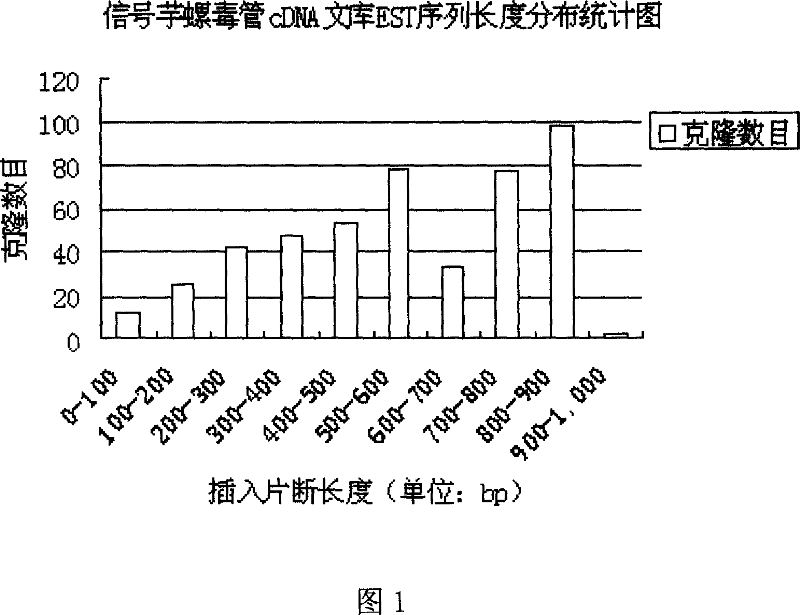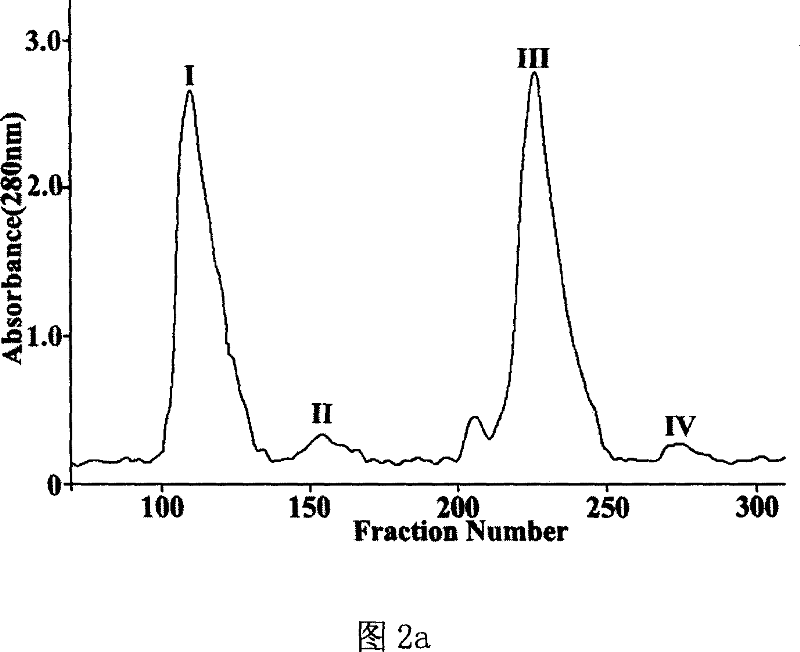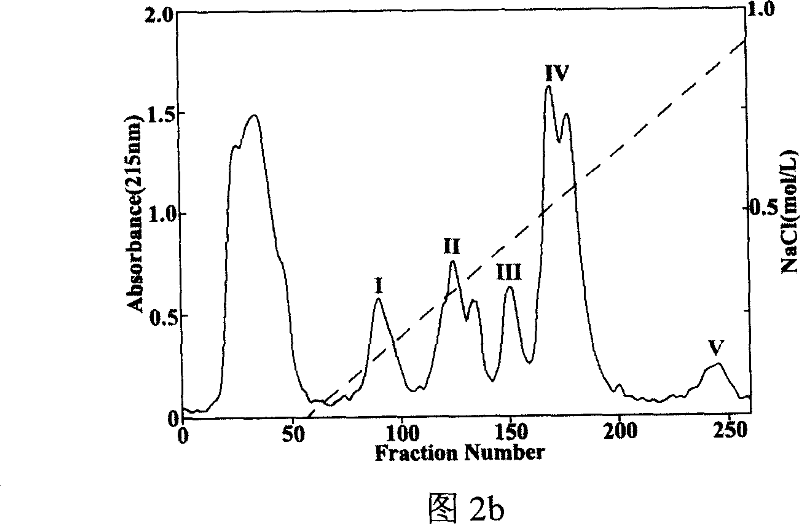Chinese south China sea signal taro snail nerve toxin gene 1t5.4 and uses thereof
A technology of neurotoxins and amino acids, applied in the fields of application, genetic engineering, nervous system diseases, etc., can solve the problems of few reports on conotoxin research
- Summary
- Abstract
- Description
- Claims
- Application Information
AI Technical Summary
Problems solved by technology
Method used
Image
Examples
Embodiment 1
[0037] Example 1: Construction of the cDNA library of the signal cono venom tube in the South China Sea and EST sequence analysis
[0038] Extraction of total RNA and synthesis of cDNA: Isolate the venomous tubes of the signal cone snail in the South China Sea, and extract the total RNA of the virulent tubes according to the instructions of Gibco BRL's TRIZOL LS reagent. Take 1 μg signal cone venom total RNA with SMART III olignuclotide (5'-AAGCAGTGGTATCAACGCAGAGTGGCCATTATGGCCGGG-3') and CDSIII / 3'PCR primer (5'-ATTCTAGAGGCCGAGGCGGCCGACATG-d(T) 30 N -1 N-3') was reverse transcribed to synthesize the first strand to obtain 10 μl of cDNA first strand product.
[0039] Construction and identification of cDNA library of signal cone venom tube: take 1.5 μl of cDNA for ligation reaction, 5 μl of reaction system, transform 1 μl of it, take 5 ul of transformation liquid to plate separately, take 300 ul of transformation liquid for shaking total library colonies. The number of single ...
Embodiment 2
[0041] Example 2: Determination and Analysis of Neurotoxin Gene lt5.4 Sequence
[0042] The plasmid and sequence of the South China Sea signal cone snail neurotoxin gene lt5.4 are from 18 highly homologous EST sequences cloned from the cDNA library of the South China Sea signal cone venom tube in Example 1, and the neurotoxin gene lt5.4 is highly expressed Genes account for about 4% of all EST sequences. Taking No. 5 plate D12 clone as an example for bioinformatics analysis, the results show that the length of its cDNA sequence is 523bp. The base sequence was analyzed by the tool software SEQTOOL, and the maximum reading frame was obtained, which was 189 bp in length and encoded a precursor peptide of 62 amino acid residues. Further analysis showed that the amino acid residues 1-20 of the precursor peptide were its signal peptide region, and its 50th residue was arginine, which could be considered as a standard proteolysis signal. Mature peptide fractions are separated. Ther...
Embodiment 3
[0043] Embodiment 3: Separation and purification of neurotoxin lt5d
[0044] Take the signal cone snail tube, cut it into pieces, extract with 50mmol / L Tris-Cl, pH8.6+100mmol / L NaCl, separate with G25Fine (i.d2.6*100cm), elute with extraction buffer, and detect at 280nm ; Collect the Q Sepharose fast flow separation on the second peak, NaCl gradient elution, collect the first peak on the C18 reverse phase column separation, acetonitrile gradient elution, and collect the peak with a retention time of 33.7min. The sequence of the isolated and purified neurotoxin lt5d is DCCPAKLLCCNP, with a molecular weight of 1274.8778 Daltons. The first and third cysteines in the molecule form a pair of disulfide bonds, and the second and fourth cysteines form a pair of disulfide bonds. to disulfide bonds.
PUM
 Login to View More
Login to View More Abstract
Description
Claims
Application Information
 Login to View More
Login to View More - R&D
- Intellectual Property
- Life Sciences
- Materials
- Tech Scout
- Unparalleled Data Quality
- Higher Quality Content
- 60% Fewer Hallucinations
Browse by: Latest US Patents, China's latest patents, Technical Efficacy Thesaurus, Application Domain, Technology Topic, Popular Technical Reports.
© 2025 PatSnap. All rights reserved.Legal|Privacy policy|Modern Slavery Act Transparency Statement|Sitemap|About US| Contact US: help@patsnap.com



